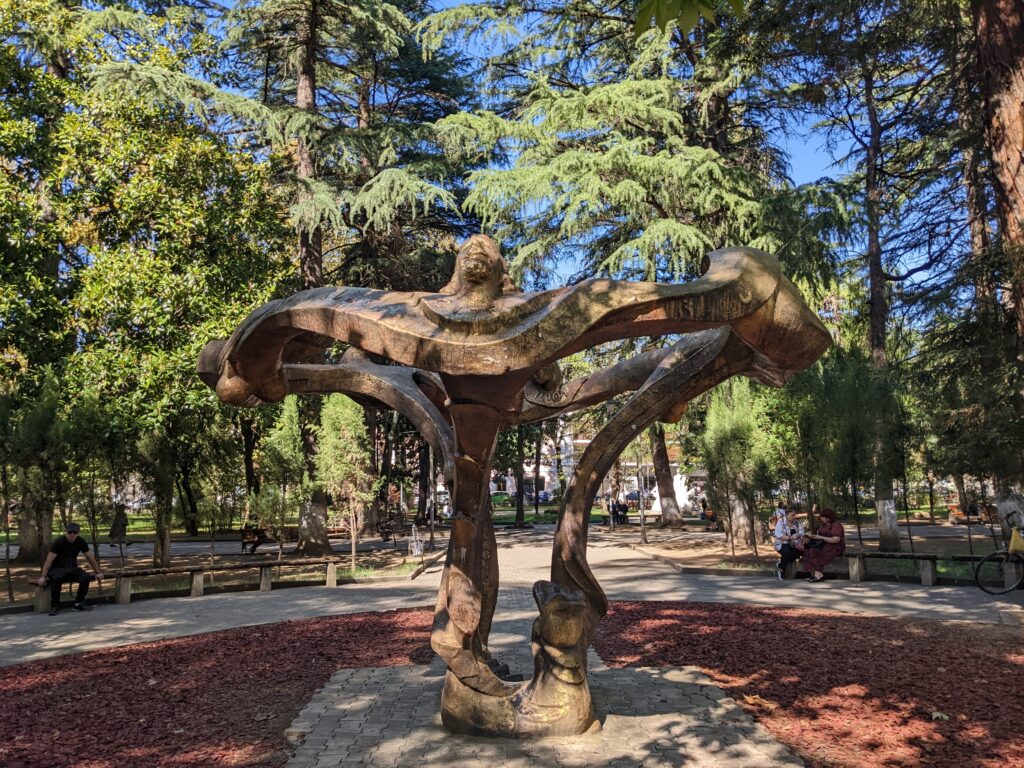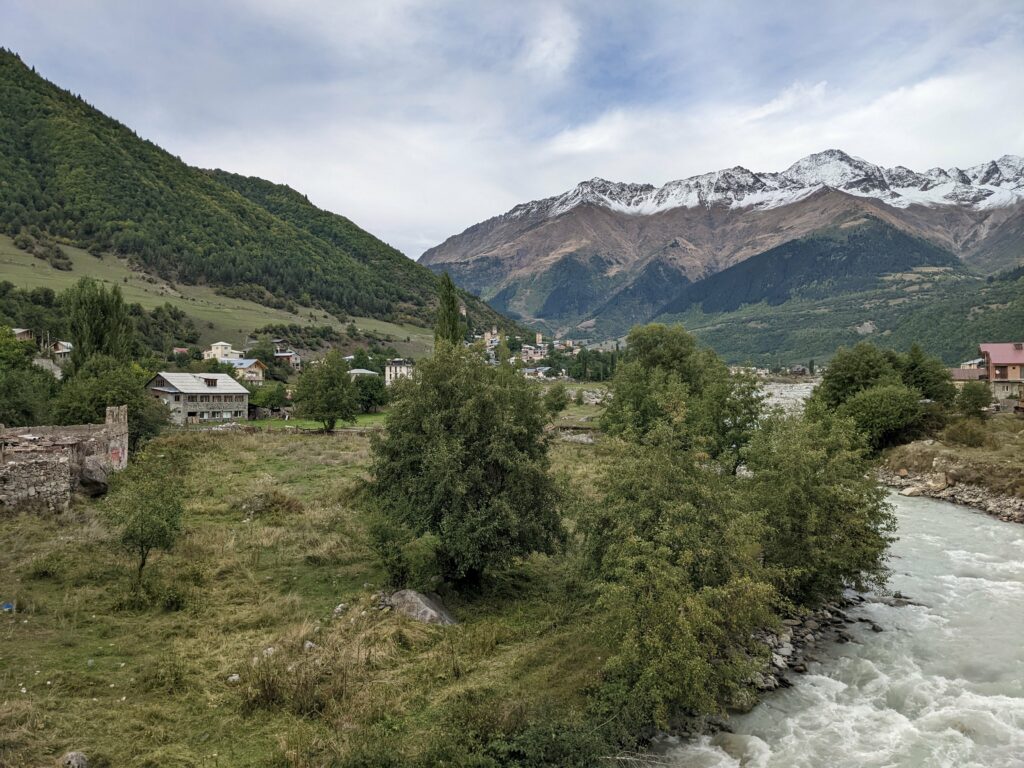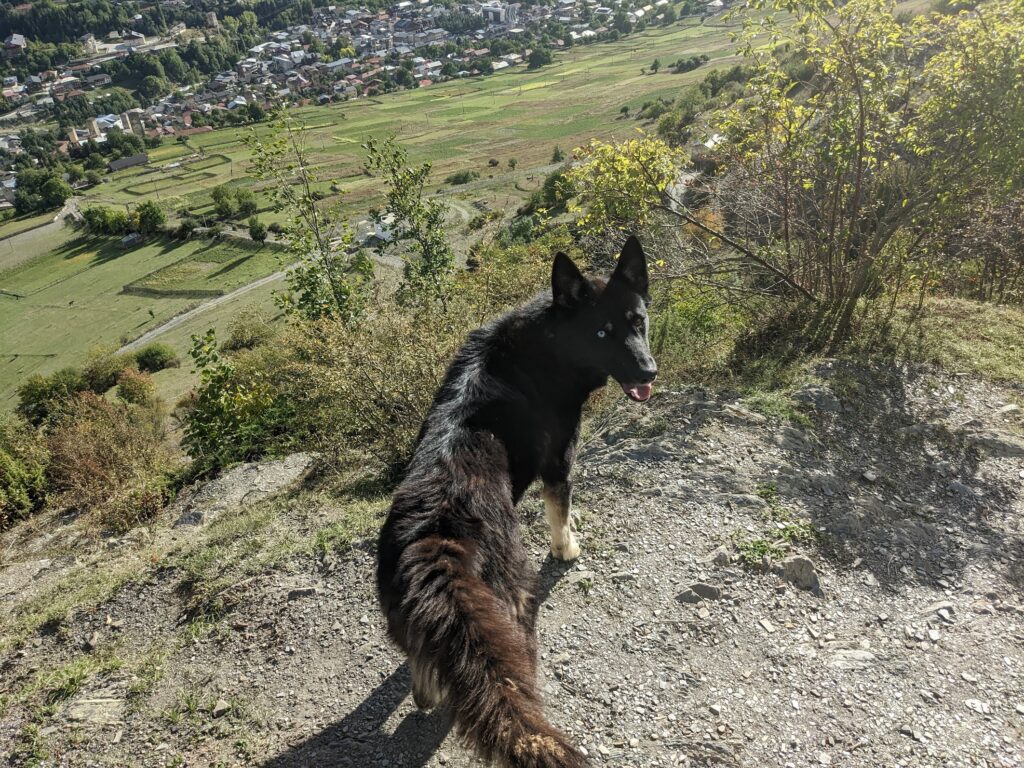Our first full day in Kutaisi was a gorgeous day – around 30 degrees, with a bright blue sky and the soft sunlight of early autumn making the leaves look even more golden. Unfortunately, Oli was unwell and I was feeling like a ticking time bomb because we’d eaten all the same things, but while I still had my health (dramatic!), I decided to get out and explore.
My first stop was to a bakery, where I picked up a lobiani (flatbread filled with crushed kidney beans) for lunch.

I could fool myself that this was somewhat virtuous choice, what with all the cheese products available in Georgian cuisine, but the sheer butteriness of the bread gave away that this probably wasn’t a health food! Undeterred, it was time for lunch pud, and I headed to the freezer counter of the local supermarket to get a Milka choc ice to eat in Kutaisi Park. With no one to check for me, I spent the rest of the day wondering how much melted chocolate I had around my mouth.
In and around the park, I saw the 9th April Memorial (remembering those killed and injured during Georgian independence demonstrations in 1989), the famous Colchis Fountain (which looked rather less spectacular than usual as it was being cleaned) and a sculpture of the Sisters Ishkhneli (a family who formed a Georgian folk quartet in 1941).
My next destination was Bagrati Cathedral, set on a hill overlooking the city. I walked up the hill via a winding road lined with traditional houses with ornate wooden verandahs. When I wasn’t leaping out of the way of passing cars on the hairpin bends, I could have been in a village. The cathedral was really striking against the bright blue sky, but even to my untrained eye, there looked to be very little of the original building remaining. Indeed, I read that UNESCO had removed the cathedral from their list of world heritage sites in 2017 because of the level of reconstruction that had taken place.


The best part was probably the view over the city, and the fact that there appeared to be a constant stream of wedding parties arriving and leaving. No sooner had one party left in a blaze of fancy dresses, dogs in tutus (really) and beeping horns, another group would arrive. It wasn’t totally clear whether they were actually attending services in the cathedral or just taking many, many photos outside, but either way it was brilliant people-watching. I found a shady spot to watch the action and plan my next move.

Earlier in the day, I’d seen the top of a Ferris wheel through trees, so in the hope that more of my rusting Soviet fairground dreams would be realised, I decided to head there next. I got a bit sidetracked on the way – just a few minutes from the cathedral was St George’s church, which I discovered hidden down a peaceful side street behind wrought iron gates covered in flowers. It felt like entering the Secret Garden, complete with overgrown graves, glimpses of the city view and a resident sleepy dog.


That is, it felt like the Secret Garden until a motorcade of beeping cars also turned up there for a wedding. I had been enjoying the peace, so I left and wandered down Kazbegi Street, peeking behind decorative gates at houses covered in grapevines and watching as lizards popped back into their hiding places on a sunny wall as I passed.



When I finally reached the amusement park, it was everything I’d hoped it would be. There were only a few other people around and the atmosphere was as eerie as it could possibly be on a sunny Saturday afternoon. The rides were lying dormant and were only started up on demand, accompanied by the sound of screeching metal echoing around the park.



I wandered around, took some photos and was about to head back to the apartment when I suddenly decided that I’d be missing out if I didn’t go on the Ferris wheel. I regretted it almost immediately – somehow I suspect that the bargain 2 lari (approx. 60 pence) token was not being put towards maintenance! The tiny carriage rocked violently as I stepped into it, and the chap manning the ride didn’t even bother to put the safety chain across the opening. The more chance I had to inspect my surroundings, the more rust I noticed, but the worst part was when the minature train in the park below creaked into life just as I reached the top. For a terrible moment, I thought that the noise had come from the Ferris wheel and that I was a goner! There was a spectacular view of the city from the top, but mostly I was just extremely relieved to be on my way down again.



After this excitement, I took a cable car across the river back to our apartment. In normal circumstances, I think this would also have been in quite worrying condition, but it was beautifully maintained in comparison to the Ferris wheel so I hopped in happily and was back at our apartment in no time.

The next day, Oli was feeling well enough to join me again, and we headed to Tskaltubo to explore some fascinating Soviet-era sanatoria.









































